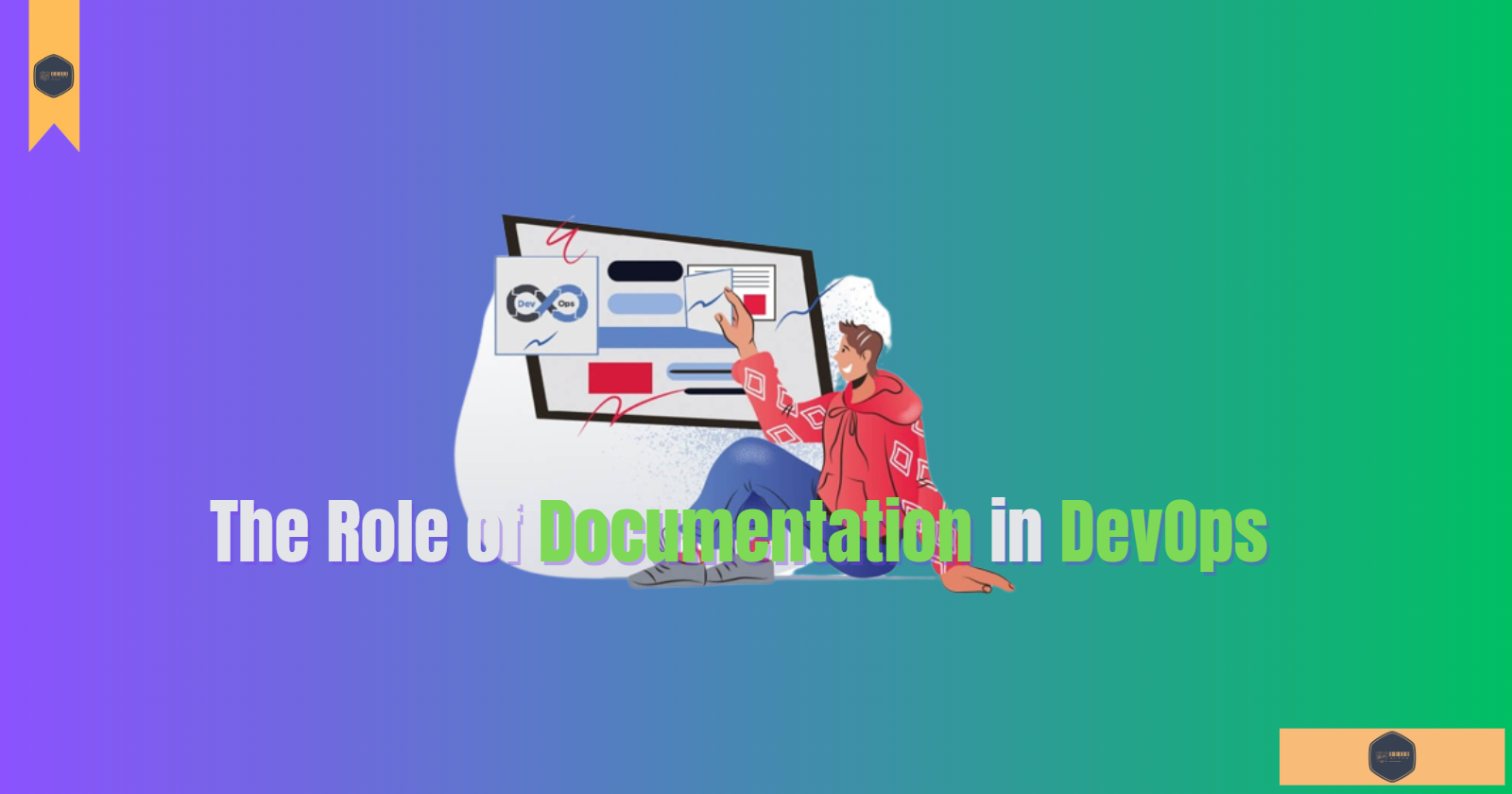The Role of Documentation in DevOps
 Abdulrahman Ahmad
Abdulrahman Ahmad
Documentation plays a critical role in DevOps. It provides a clear understanding of the processes, procedures, and tools involved in delivering software. Documentation helps to ensure that all stakeholders are on the same page and have a shared understanding of the requirements, specifications, and objectives of the project. Documentation also serves as a reference for future use, enabling teams to build on previous work and improve processes over time.
In a DevOps environment, documentation takes on even greater importance. DevOps relies on a culture of collaboration and communication, with teams working together to deliver software more efficiently and effectively. Documentation provides a common language for all stakeholders, enabling teams to communicate more effectively and collaborate more efficiently.
Live Example:
Let's take a look at a live example of how documentation can be used in a DevOps environment. In this example, we will use Terraform and Kubernetes to deploy a simple web application.
Step 1: Create a Terraform configuration file
First, we will create a Terraform configuration file that defines the resources we need to deploy our web application. Here's an example:
provider "kubernetes" {
config_context_cluster = "my-cluster"
}
resource "kubernetes_deployment" "webapp" {
metadata {
name = "webapp"
}
spec {
replicas = 1
selector {
match_labels = {
app = "webapp"
}
}
template {
metadata {
labels = {
app = "webapp"
}
}
spec {
container {
image = "nginx:latest"
name = "webapp"
port {
container_port = 80
}
}
}
}
}
}
As you can see, this file defines a Kubernetes deployment for our web application, using the nginx image.
Step 2: Document the Configuration File
Next, we will document the Terraform configuration file. This documentation will provide a clear understanding of the resources being created and the purpose of each resource. Here's an example:
# Terraform configuration file for deploying a web application to a Kubernetes cluster.
# Provider configuration for Kubernetes.
provider "kubernetes" {
config_context_cluster = "my-cluster"
}
# Kubernetes deployment for the web application.
resource "kubernetes_deployment" "webapp" {
metadata {
name = "webapp"
}
spec {
# Number of replicas for the deployment.
replicas = 1
# Selector for the pods.
selector {
match_labels = {
app = "webapp"
}
}
# Pod template for the deployment.
template {
metadata {
# Labels for the pod.
labels = {
app = "webapp"
}
}
# Container definition for the pod.
spec {
container {
# Image for the container.
image = "nginx:latest"
# Name for the container.
name = "webapp"
# Port mapping for the container.
port {
container_port = 80
}
}
}
}
}
}
In this documentation, we have provided a clear explanation of the resources being created and the purpose of each resource. We have also included comments throughout the file to provide additional context and clarity.
Step 3: Deploy the Web Application
Finally, we will deploy the web application using our Terraform configuration file. Here's an example:
$ terraform init
$ terraform apply
Once the deployment is complete, we can verify that our web application is running by accessing the IP address of the Kubernetes node on port 80.
Conclusion
In this article, we have explored the role of documentation in DevOps and provided a live example with code and images. We have shown how documentation can provide clarity, context, and understanding in a DevOps environment, enabling teams to collaborate more effectively and deliver software more efficiently. By prioritizing documentation, we can build a culture of communication, collaboration, and continuous improvement in our DevOps practices.
Subscribe to my newsletter
Read articles from Abdulrahman Ahmad directly inside your inbox. Subscribe to the newsletter, and don't miss out.
Written by

Abdulrahman Ahmad
Abdulrahman Ahmad
🚀 Code. Automate. Innovate. Hi, I’m Abdulrahman, a passionate DevOps Engineer and Software Developer on a mission to bridge the gap between code and production. With a love for automation, cloud-native solutions, and cutting-edge tech, I turn complex problems into seamless, scalable systems. 💡 What I Do: Build robust CI/CD pipelines that deliver software at the speed of thought. Architect cloud infrastructure that scales with a single command. Transform manual processes into automated workflows that just work. Break down silos and foster collaboration between teams. 🔧 Tech Stack I ❤️: Containers (Docker), Orchestration (Kubernetes), Infrastructure as Code (Terraform), CI/CD (Jenkins, GitLab), Cloud (AWS/GCP/Azure), and scripting like it’s my superpower. 📝 Why This Blog? This is where I share my journey, lessons learned, and the latest trends in DevOps and software engineering. Whether you're a seasoned pro or just starting out, join me as we explore the tools, tricks, and best practices that make the tech world tick. 🌟 Let’s Build the Future, One Pipeline at a Time. Connect with me, share your thoughts, and let’s automate the world together!